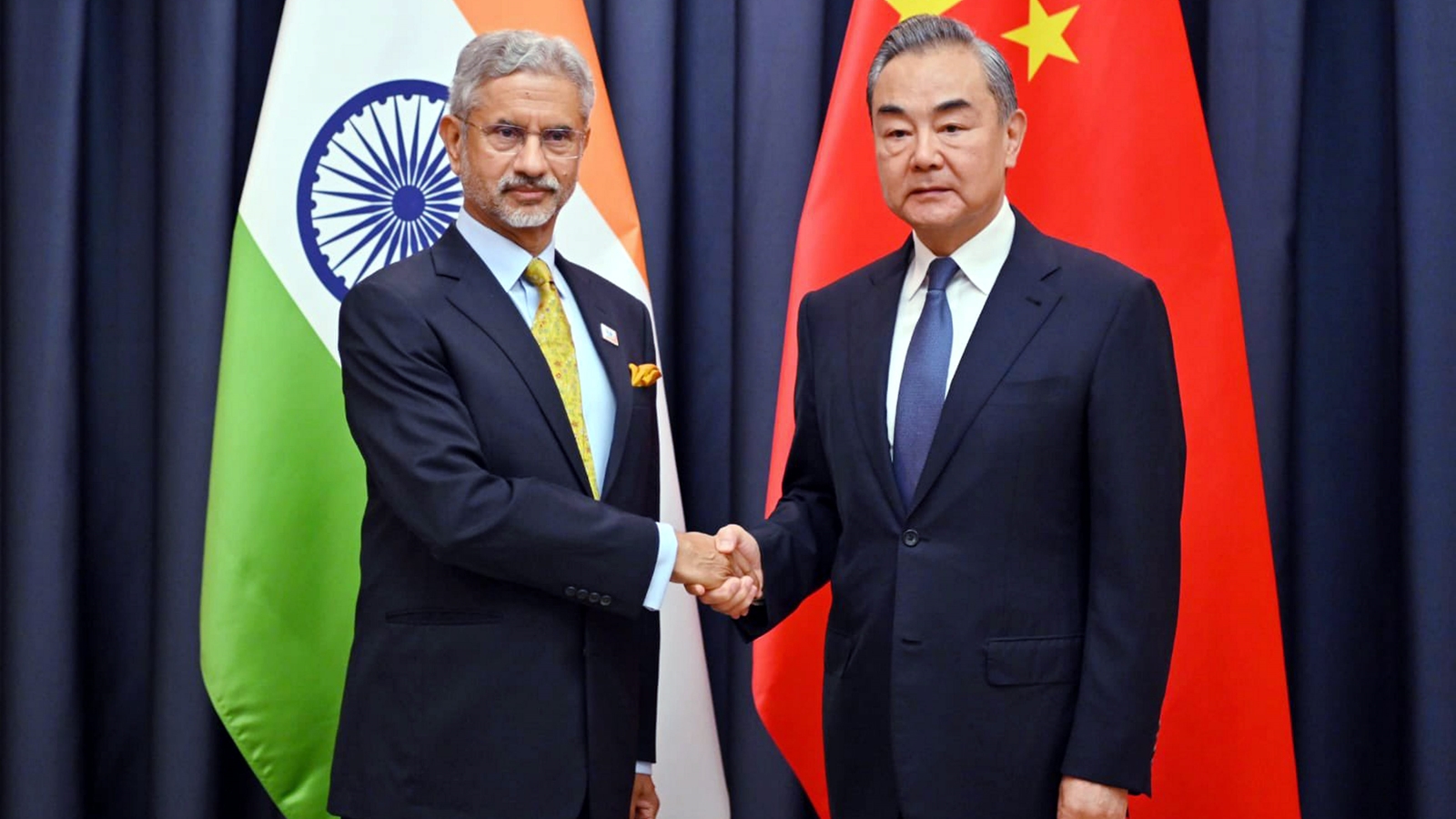On July 4, India’s External Affairs Minister Subrahmanyam Jaishankar met with Chinese Foreign Minister Wang Yi on the sidelines of the Shanghai Cooperation Organisation (SCO) meeting in Astana, Kazakhstan. The post-meeting readouts from both sides demonstrate the distance between their respective positions and why normalcy in bilateral ties is likely to remain elusive.
The MEA’s readout is a restatement of India’s established position that “complete disengagement from the remaining areas in Eastern Ladakh” and restoration of border peace and tranquillity are prerequisites to the restoration of normalcy in ties. In addition, the statement talks about respecting the LAC, abiding by relevant bilateral agreements, protocols, and understandings, and maintaining peace and tranquillity in the border areas. What it does not mention as a goal is the restoration of the pre-May 2020 status quo.
In contrast, the Chinese readout stresses on “properly handling and controlling the situation in the border areas” while simultaneously “actively restoring and expanding normal exchanges.” On the surface, this doesn’t appear to be particularly different from earlier messages from Beijing. However, it is worth noting that Wang did not stress that the border issue should be put in an “appropriate position” in bilateral relations and not define overall ties. What was also different was Wang’s comment that China was willing to “explore the correct way for two major neighbouring countries to coexist,” entailing the need to “respect, understand, trust, and accommodate each other, and help each other succeed.” This is a different formulation from the earlier, oft-repeated one around the two sides not being threats to each other but opportunities for each other’s development.
Words are important. But actions are what truly matter. One must, thus, wait and watch whether Wang’s rhetoric materialises into tangible changes in Chinese policy, particularly around disengagement and de-escalation in Eastern Ladakh. That will be key to developing stability and predictability in the relationship, which is critical for both countries’ strategic ambitions. Unfortunately, without changes in Chinese policy, it would be strategically imprudent and politically difficult for the Indian administration to return to the normal track in ties.
India’s frustration with China is encapsulated in the framework of the three mutuals – mutual respect, mutual sensitivity and mutual interests – which Delhi wants Beijing to adhere to. The primary expression of this has been in the context of Chinese military posture along the LAC. But there are also concerns around China’s deepening engagement in the Indian subcontinent and lack of appreciation for India’s expanding interests and stake across East Asia and the Global South and within multilateral institutions. Xi Jinping’s decision to skip the G20 summit in New Delhi in 2023 was an example of this.
Meanwhile, from Beijing’s perspective, there is growing annoyance with a spectrum of Indian policies. For instance, India continues to resist the resumption of direct flights between the two nations despite Chinese calls for normalcy. The visa approval process for Chinese scholars, travellers and talents continues to be rather challenging, despite it, on occasion, adversely impacting Indian industry. Delhi has also taken a series of steps cracking down on Chinese imports and alleged illegal activities by Chinese companies. Late last month, India’s Directorate General of Trade Remedies initiated an anti-dumping probe on glass fibre imports from China, Bahrain and Thailand after complaints from domestic manufacturers. Delhi has also been cautious and selective when it comes to approving Chinese investments.
On the foreign policy front, China remains particularly wary of India’s growing proximity with the US. In fact, the Chinese readout of the Jaishankar-Wang meeting reflects this persistent anxiety, with the Chinese minister calling on his Indian counterpart to work together to “oppose unilateral bullying, resist camp confrontation, safeguard the common interests of developing countries, and make due contributions to regional and world peace, stability, and development.”
Beijing would have certainly noted, with some consternation, the recent comments by prominent RSS leader Ram Madhav stressing that the rise of China calls for “greater understanding and coordinated action between the US and India,” the MEA’s remarks criticising the PLA’s actions in the South China Sea and the US Congressional delegation’s visit to Dharamshala.
Chinese officials, however, have chosen not to hype up any of these developments and lash out at India. Instead, the new Chinese ambassador, Xu Feihong, has been engaged in quiet diplomacy, meeting with key stakeholders, including Foreign Minister Jaishankar and former ambassadors. His statement condoling the deaths in the recent stampede in Hathras is also an example of softer public diplomacy from the Chinese side.
In sum, while the relationship between India and China will likely remain strained for the foreseeable future, there appears to be a faint crack in the door for some sort of a tactical adjustment. This will require meaningful actions by Beijing, and will not be easy given the political changes following the elections in India. Moreover, the underlying, structural issues are not likely to be easily addressed. Nevertheless, complete disengagement and de-escalation in Eastern Ladakh can provide a starting point for steps to be taken in other domains. Achieving this requires sustained and often frustrating dialogue at multiple levels to devise a roadmap of action. While continuing to prioritise its concerns on the border, India must not eschew such engagement.
Kewalramani is the Chairperson of the Indo-Pacific Studies Programme at the Takshashila Institution. Saraf is a Research Intern at the Takshashila Institution



